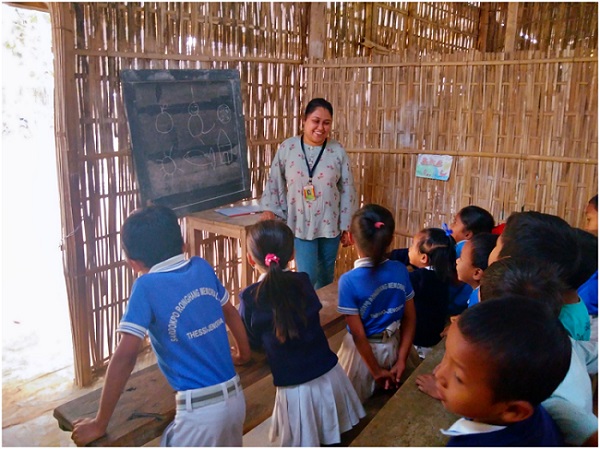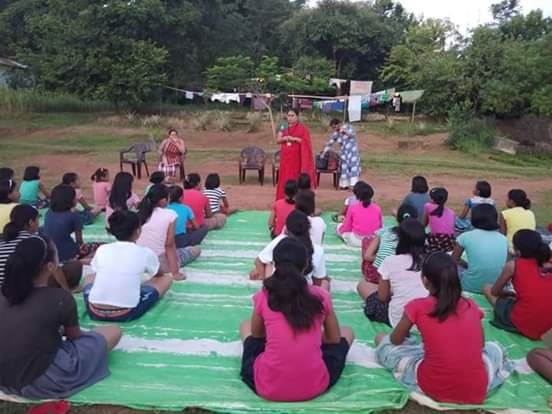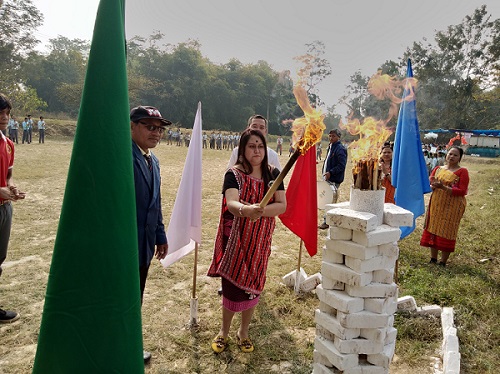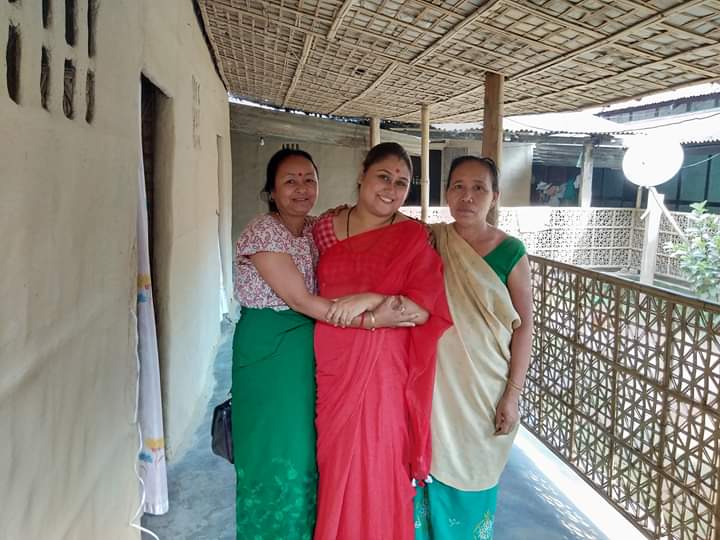Tribal Rights Activist Ananya Paul Dodmani has been working with tribals across the country, especially in the North East, for more than a decade. In this interview with Vivek Sinha she offers insights about the pressing issues amongst Indian tribes. As opposed to the “Melting Pot” approach where several cultures blend together to look homogeneous, Ananya Paul advocated the “Salad Bowl” approach where each culture coexists in complete harmony, and yet retains its distinct cultural identity.
Vivek Sinha: You have been working for the welfare of tribal societies for a long time. What are some of the key issues amongst the North East tribes of India?
Ananya Paul Dodmani: North East India has been plagued with different issues over centuries that include economic, political and otherwise. For instance, the tribals in North East do not have proper access to good educational infrastructure, good roads and good health centres just to mention a few. There’s a major lack of stable income facilities among these tribals because of poor educational skills.
Vivek Sinha: What do the tribal communities aspire for? Are their dreams and aspirations similar to that of a city dweller? If no, then what do they aspire for in their life?
Ananya Paul Dodmani: I have been working with the tribals across India for more than a decade now. The simplicity and the minimalist approach that they follow in everyday life is commendable and something that ‘we’ city dwellers should imbibe and learn from. Having said that, the struggle and the everyday fight for a better and united community as a whole which we witness in the tribal habitat is gradually fading off with the coming of modern technologies in their life.
Yet, the tribal kids do not have too much of aspirations to make it “big” in the outside world. They definitely want to study and bring a major change in their own habitats and communities they live in. They look forward to a better livelihood module and wish for more income generations without having to compromise their own ethnic way of life, which I feel is really commendable. The contentment in their everyday lives is reflected in the way they think and look at the outside world.

Vivek Sinha: Most often the government departments have an ethnocentric approach such that they try to thrust their own belief systems on to the tribes, which in most cases is rejected by the tribals. What do you think should be the role of government?
Ananya Paul Dodmani: Majorly the government should strive for better awareness and development of educational infrastructure and its modules, apart from imparting life skill training and the high income generation modules rather than thrusting their opinionated and fixed ideas to the ethnic tribes.
Vivek Sinha: You have been working with the tribals for over a decade. Tell us something about your work. What impact have you been able to create on the tribes of North East?
Ananya Paul Dodmani: I feel that the major and primary instrument which could change the way we look at North Eastern India is better education, health & sanitation facilities and better income structures. I have single-handedly built community rooms, changing rooms for girls in the Karbi village in Assam. I counsel and teach them the basics of education, go to each house in the tribal habitat personally counselling them on various life skills like stitching, paper bag making, composting, rearing of Eri silkworms and ethnic tribal weaving. We promote all these through the Saksham Foundation for a better marketing in the mainland.
Vivek Sinha: Tell us about your experience while working in the Karbi village, which is the remotest village and is affected by militancy. What are the core issues for the tribals in this village?
Ananya Paul Dodmani: In any part of the India’s North East issues remain more or less the same. The terrain is very difficult to work, communications from getting one tribal habitat to another remains a big time challenge with practically less or no accessibility in terms of road facilities. In the Karbi village, I am now focusing on the major issues with women’s health and sanitation. The female student dropout rate is quite high in this village where there are no toilets or health centres around. Also, after they reach adolescence they have practically no connection with the outside world and no modern educational amenities. Add to these the lack of good income facilities. All these make them prone to exploitation and often they are forced to indulge in unconstitutional activities affecting peace and harmony in the region.
Vivek Sinha: I read about your Sustainable Menstrual Program for the tribal women and your initiative to teach them prepare biodegradable sanitary pads. Please tell us more about this project. Can your model be replicated in other parts of India, in remote Indian villages, for instance?
Ananya Paul Dodmani: The project “Brave in Red” is my brainchild and it was primarily conceived with an idea to promote an awareness about sustainable menstrual hygiene amongst tribal women. Till now through the “Brave in Red” project I have reached over 10,000 tribal women and girls across India wherein I have conducted free workshops about sustainable menstrual hygiene and helped them shed the taboo around menstrual health. I have a patent for making biodegradable menstrual pads, which I teach the tribal women across India for free so that they can use it themselves and also sell them for earning a livelihood. And yes, this can easily be replicated in any part of the country.

Vivek Sinha: Tribals are closest to the nature and possess unique knowledge about herbal and natural medicines. What has been your experience? Can the modern medical science gain some knowledge from the traditional medicinal wisdom of North East tribes?
Ananya Paul Dodmani: Yes this is very true that tribals are very close to nature and are blessed with ample knowledge about natural herbs and plants which can be used by all. Even in their day to day life the tribals use this knowledge about medicinal herbs to cure common ailments for which the urban dwellers rely on modern medicines. I would like to share a personal experience of mine, wherein I personally did not use the prescribed antibiotic to cure a tract infection in my body. This incident happened during my last stay at Karbi Anglong in Assam when I had contracted some infection due to change of place and water. The generous people of the village gave me some herbs that was boiled with water and after taking a glass of the boiled water with these herbs my tract infection was gone. In this case I was about to take Ofloxacin-200 but this herbal drink worked like wonder.
I would definitely say that though modern medicine has been very effective in treating diseases that were considered dangerous some years back, but it does has side effects also as it is prepared in a lab and it is synthetic. All I can say is that most of the modern drugs take herbal extracts into their composition and it is a widely known fact. But if you can take these herbs at an early stage of any disease as a precaution most of the common problems can be resolved with those herbs without getting any side effect. Modern science as you have mentioned is already using herbs and plants extracts and yet the wisdom about healing properties of herbs remains in practice amongst tribals. So, I think there is nothing new to that, yet one can always learn from the tribals.
Vivek Sinha: Would you prefer the “melting pot” approach or the “salad bowl” approach to integrate North East tribes with rest of India? Why?
Ananya Paul Dodmani: When we speak of India, we are such a diverse nation in terms of culture, language and ethnicity that I would never approach the “melting pot” concept. The concept of “melting pot” which is basically a metaphor for diverse heterogeneous culture becoming homogeneous cannot stand true in the case of India. The tribes of North East are already a part of our country and they add or bring in lot of ethnic values to our rich cultural heritage. So, I would like to approach the “salad bowl” method and place them with mainstream India which is already a salad platter with twenty eight states and nine union territories and we still are united in this diverse country. So for tribals in India my take is the “Salad Bowl” approach.

Vivek Sinha: How does the racist approach by rest of India towards people of North East in general, and to the North East tribes in particular, affect the cultural assimilation of tribals into the Indian mainstream?
Ananya Paul Dodmani: Racism is a very sensitive topic and I would not like to comment on this. But speaking in general, people have become more acceptable these days when you speak of any culture other than yours. Cultural assimilation is already there as you can find North Eastern students all over India these days with their ethnic language, food, music and costumes. And when we speak of North East, we here are speaking of eight states, more than a hundred dialects, thousands of cuisines and costumes. You can find North East food, dresses etc. across all major cities of India. Indians as a whole have accepted this fact and I think the racist approach towards them has dropped largely and you hardly hear news about racism these days!

